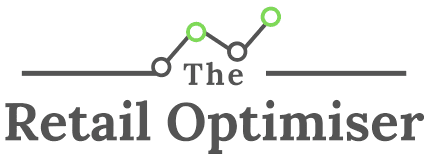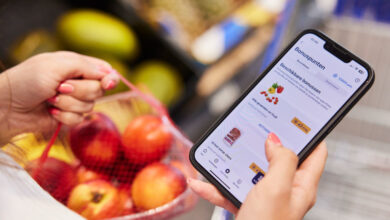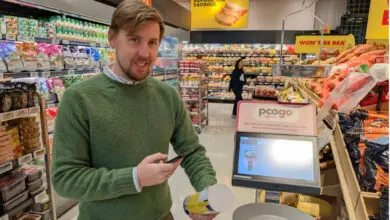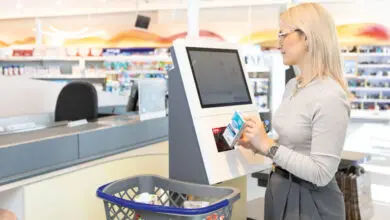SAP surprises with RFID showcase for grocery retailing
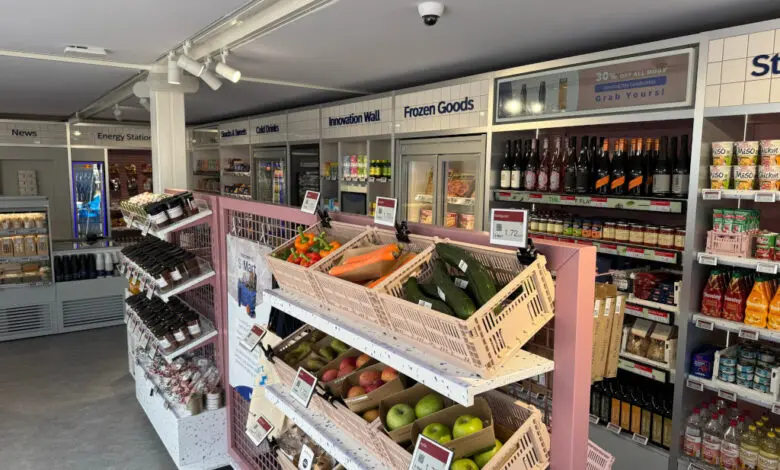
An article by Magdalena Nowak and Björn Weber
SAP has opened a new retail technology test store on the grounds of its headquarters in Walldorf. Following the retail showroom in its Customer Experience Centre and a Grab&Go store for employees with technology service provider Zippin, this is the third test of the interaction of different retail technologies on the Walldorf site.
Like the Grab&Go store, the new trial, called S-Mart Store, is operated by Aramark, which operates the catering service for SAP. Currently, only SAP employees and registered guests can visit the store. In the future, the market will be open to the public. The new S-Mart store integrates SAP software with technologies from VusionGroup, Diebold Nixdorf, C2RO, Payfree and Adyen. Lenovo and Intel participate as hardware partners. SAP implementation partner Retail Solutions provided the system integration.
What may surprise visitors from the retail industry is the use of RFID on individual grocery items in SAP’s new test store. While the technology is catching on in the textile retail industry, it has actually been considered a failure in grocery retail regarding item-level tagging. The high liquid content of food products absorbs the frequencies used by RFID, and the metal packaging reflects them so often that the goods can only be read after the products have been separated, rather than in bulk. In addition, in view of the thin margins in grocery retailing, the cost of the RFID chips themselves and more importantly the cost of applying them to the product, makes them unsuitable for use on individual yoghurt pots, given the thin margins in the food industry.
RFID problematic for grocery retail
In fact, Payfree’s RFID technology, which is used in the S-Mart store, has made a name for itself in the textile retail industry. For example, it is used by fashion retailer Better Rich and in the Eintracht Frankfurt stadium fan shop. In the age of AI-based vision recognition, the convenience food retail sector is more likely to consider camera-based recognition of individual items at self-checkouts than the use of RFID. Especially since RFID tags can usually be easily peeled off the product, which is a potential gateway for shrinkage.
The store is accessed via an app, which also contains individual data such as personalised offers. In the background, cameras mounted on ceilings and shelves use computer vision to analyse visitor behaviour. This records when customers enter the store, which products they look at and what they end up buying.
VusionGroup monitors shelves and controls dynamic content in the S-Mart store
The SAP ecosystem in the S-Mart store collects real-time data to manage tasks such as product and price management, inventory control, customer service and trend analysis. Systems from several technology partners are integrated to provide a comprehensive view of the store’s operations. The shelves are equipped with VusionGroup’s Captana solution. Around 120 cameras monitor the shelves to prevent out-of-stocks. In the future, the Captana technology in the store will also identify products that have been placed incorrectly.
Additionally, VusionGroup has equipped the showcase store with its Engage Rails, which allow dynamic content to be displayed across the entire shelf area. In combination with the app, the rails can be used to display promotions and advertising tailored to the customer. VusionGroup’s full-colour electronic price labels (ESLs) can display real-time price and product information.
Retail Optimiser Picture Gallery
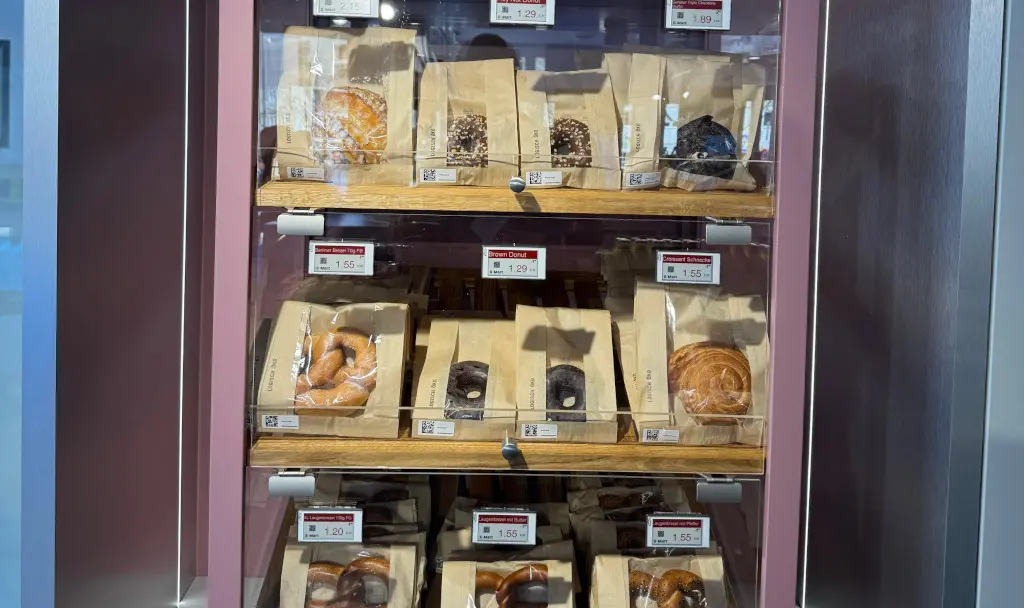
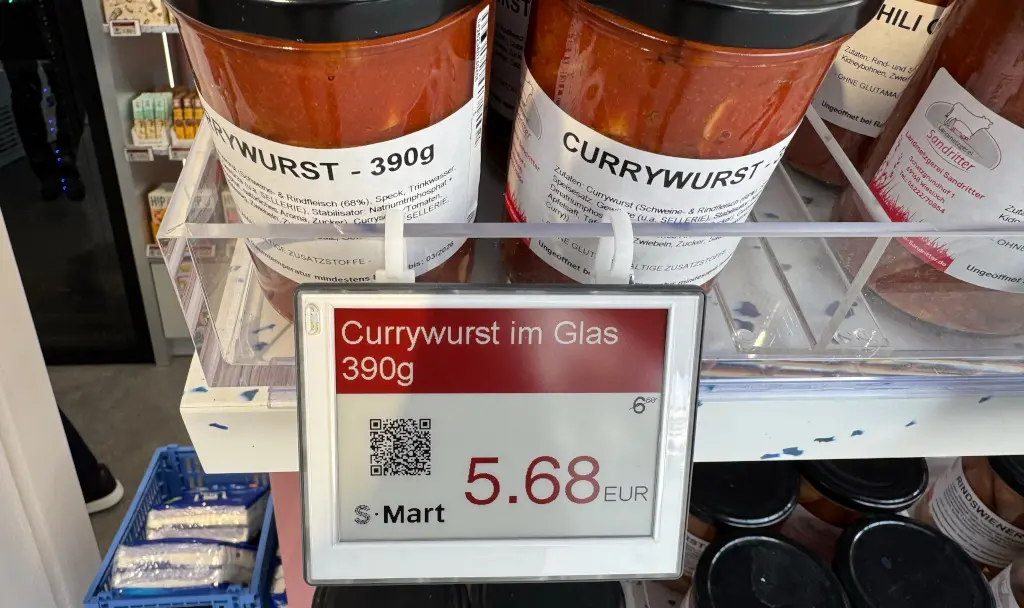

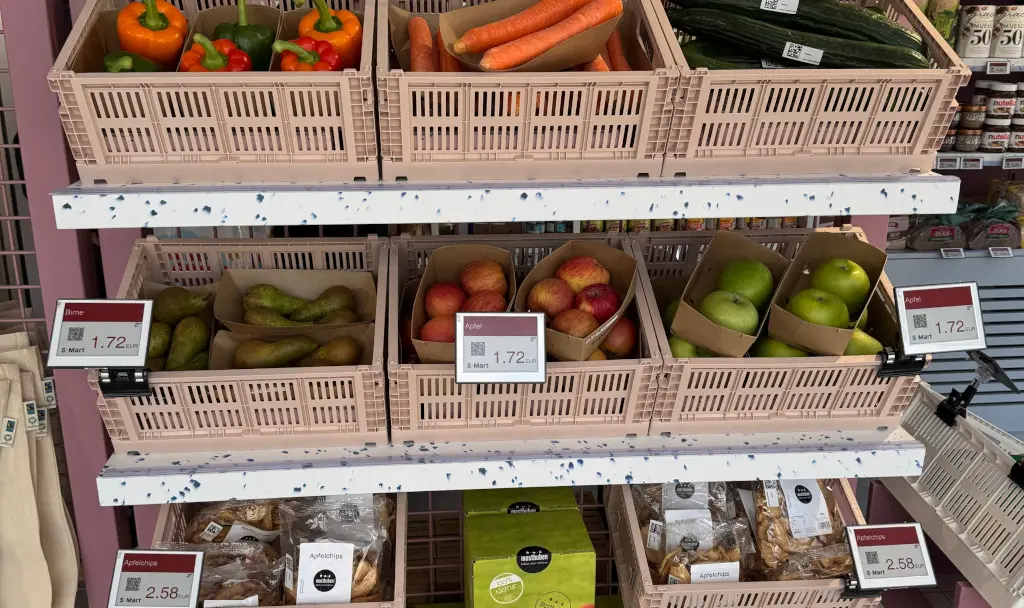

All photos: VusionGroup
QR code on the RFID tag
Alongside fresh fruit and vegetables, breakfast cereals, confectionery and snacks, the store also offers freshly baked goods and frozen foods. The RFID tags on each product also carry a QR code that customers can use to access relevant product information. Customers can also check out using a traditional self-checkout system from Diebold Nixdorf.
SAP’s latest retail showcase
A wide range of technologies from different vendors work together in the S-Mart store. The solutions are designed to optimise the customer shopping experience and the operational processes in the background.
- The shelves are equipped with VusionGroup’s Captana solution. Around 120 cameras monitor the shelves to prevent out-of-stocks. In the future, the Captana technology in the store will also identify products that have been placed incorrectly.
- Diebold Nixdorf provides the classic self-checkout system, which allows customers to scan and pay for their items as usual.
- The checkout specialist Payfree is responsible for the RFID-based payment technology. Together with Eintracht Frankfurt, the technology provider won the Reta Award for the first cashier-free fan shop in the German Bundesliga, as reported by The Retail Optimiser.
- C2RO provides the AI-powered loss prevention platform for the S-Mart store. This solution combines real-time monitoring with behavioural analysis and vision recognition. By analysing customer behaviour, the technology can detect anomalies, such as people bypassing self-checkout lane scanners.
- In the SAP Store, French provider Telelogos is presenting its digital signage solution, which enables dynamic, personalised and context-sensitive content to be displayed directly in the store. This solution ensures that communication is tailored to the needs of the customer.
